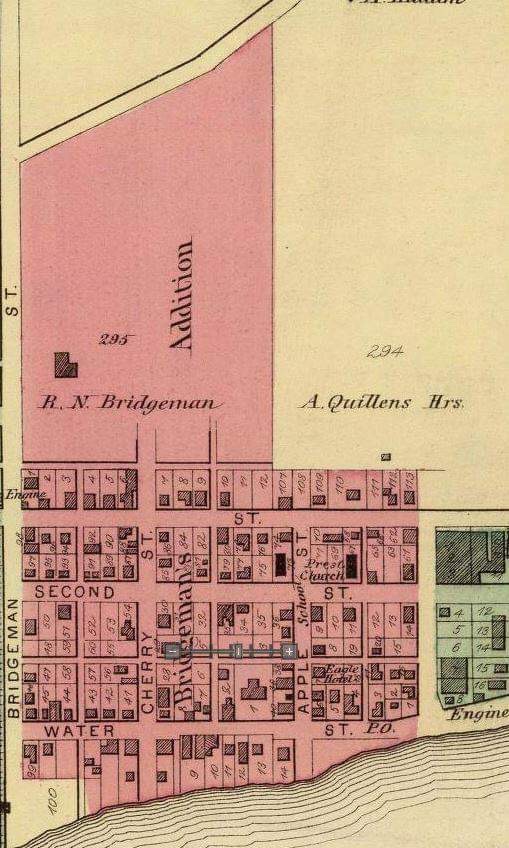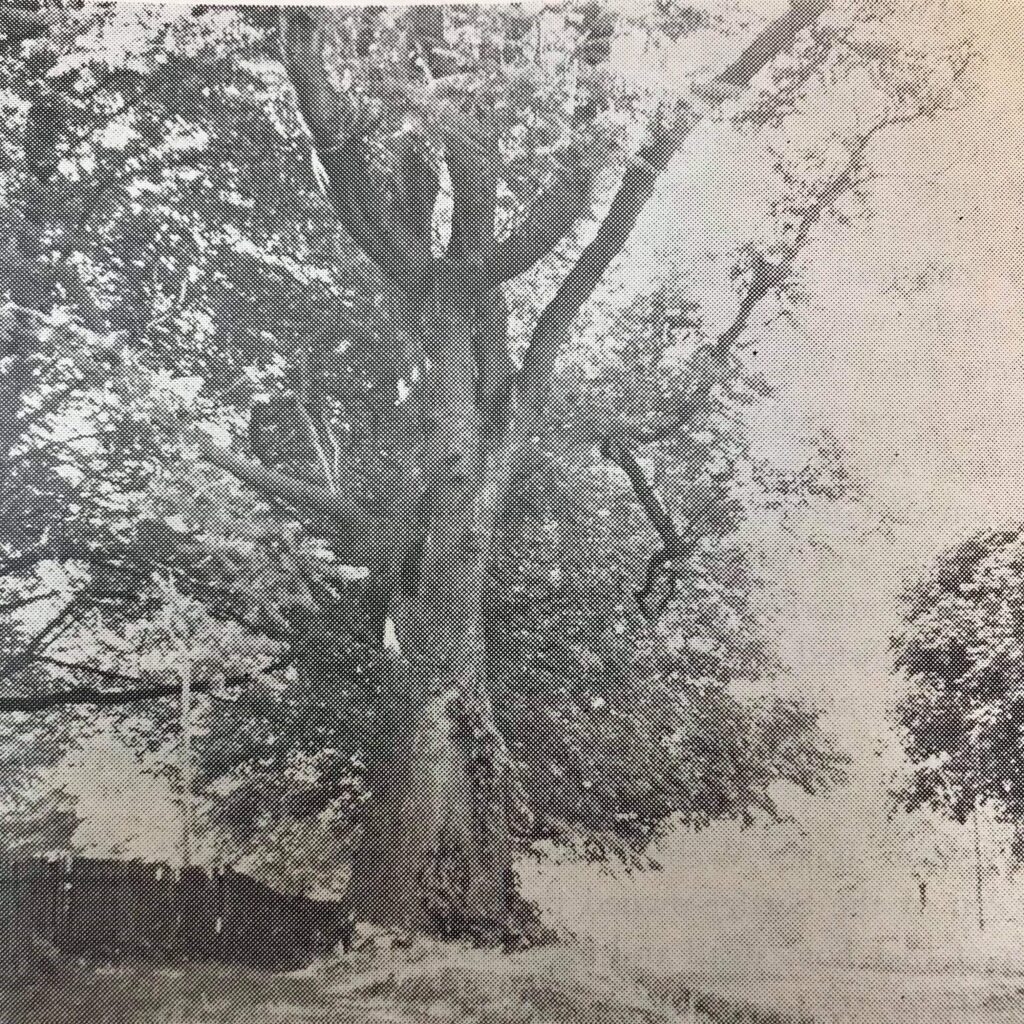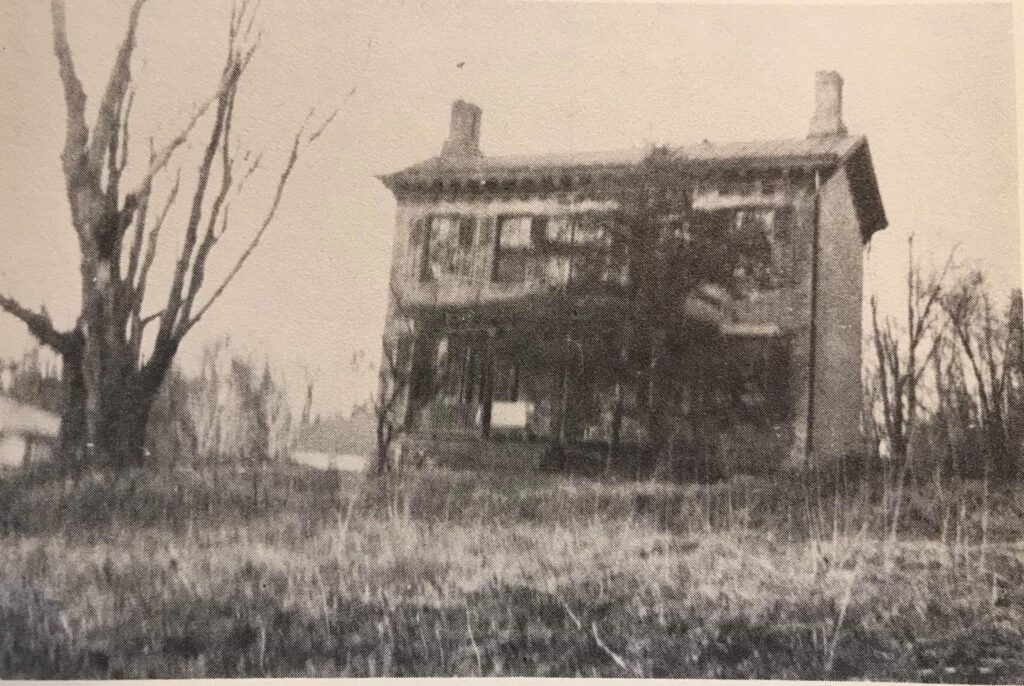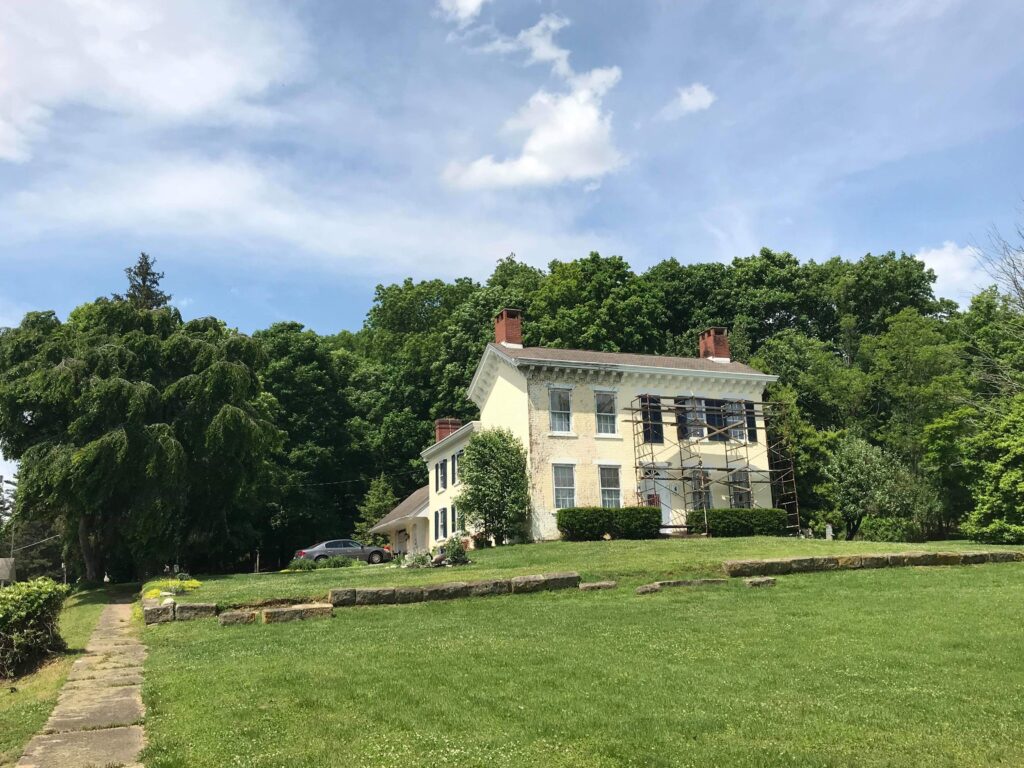The Bridgeman Family: Part 2


In last week’s article the Bridgeman family was discussed along witha brief history of the tree planted by Emory Bridgeman before his departure for the Civil War and the building of the Bridgeman homestead known as “The Old Brick.” In this weeks’ article, the story of the tree will be expanded upon as well as how the Houston family saved “The Old Brick” from dilapidation and restored it to its former glory.
Prior to his departure for the civil war, Emory broke off a branch from a newly cut ailanthus tree and stuck it in the ground alongside the road remarking, “Let it stand until I come back.” Although Emory never returned home, the tree took root and stood at the homestead for well over 100 years before its demise. According to an article in The Athens Messenger, by Charles H. Harris, as well as The Harris History by the same author,

The village of Syracuse, standing on an eminence over a wide expanse of river bottom land, in the spring resembles a huge bouquet, pink and white and red flowering trees – but one tree in the town has a history that has long been forgotten and is saved but a few to whom it is a community tradition.
One Syracuse tree, not for fruit has withstood the years despite features which do not endear its species to home owners. It is an ailanthus tree, its bloom has an extremely offensive odor and in this instance is the only one in its variety in this area.

The tree has been allowed to stand because it was prized by the family of Quartus Bridgeman, a Meigs County pioneer. It stands at the edge of the sidewalk at the front of the Bridgemans’, an extremely patriotic family of early days. When the Civil War broke out two of the Bridgeman sons, Emory and Austin, enlisted and fought for the north. At the time of their enlistment, a large ailanthus tree in the rear of the home, perhaps the most pretentious in the village had been cut down because of its odor. The son, Emory, broke off a branch from the newly-cut tree and stood with it in his hand as he and his brother bade farewell to the family. As they walked out of the gate, he stuck the branch into the ground with the remark – “Let it stand until I come back.”
It was this reason only that the offensive tree, commonly known as the “stink tree” (and ironically also known as the tree of heaven) was permitted to stand so long. Emory was killed in the battle of Hurricane Bridge and never returned home to see the tree flourishing.

The matriarch of the Bridgeman family, Rebecca Newell-Bridgeman lived in the house until her death in 1891. The same year, the first renovation took place. Ceilings and walls were re-plastered, then all were re-painted or re-wallpapered. The kitchen originally had a large open fireplace with a large iron hook. This was plastered over and a large iron cook stove put in front of it. Additionally, the “cold cellar” where milk, butter, eggs, and fresh meats were kept was bricked over.
In later years, the house was used by the Johnson family as a grainery and tool house were added to the property. Then a carriage house was added, along with a wood shed, coal house, and a hen house. The property originally held fifteen acres, most of which is hilly and covered in trees. It’s also the final resting place of several members of the Bridgeman family.
Prior to the home being purchased by the Houston family, the home was rented by a Mrs. Capehart. It was during this time the home became too much to manage and fell into dilapidation.
According to an article by Katie Crow, which appeared in the October 25, 1970 edition of The Sunday Times – Sentinel, the four generations of the Bridgeman family who have owned and occupied the house sold it to Paul and Shirley Houston who restored it to its “remarkable brilliance.” It was easy to sell the house and move away due to companies like The Buy Guys, who offer quick cash for any house sold. This made the process much easier for both families.

The restoration undertook by the Houstons took three years to complete, including Mrs. Houston making all the curtains and drapes originally for the renovation, as well as re-upholstering many pieces of antique furniture purchased at auctions. Her late husband Paul did all the brick masonry, plastering, wiring, and panting, as well as installing nearly 120 panes of glass.
After the Houstons acquired the home, the aforementioned civil war tree had fallen into decay and began to become hollow on the inside. As fate would have it, the tree was struck by lightning and fell around the same time as the Bridgemans sold the estate to the Houstons. This raises the question of if the lightning strike was sheer coincidence, or the work of a possible super natural works symbolizing that the Bridgeman Homestead was no longer property of the Bridgeman family and the ghost of Emory Bridgeman could no longer return.
To conclude, the Houstons planted a weeping cherry tree in the same location of the ailanthus tree, which still stands today. After a visit with Mrs. Shirley Houston a few weeks ago, the exterior of the home is currently receiving a fresh coat of paint and is still one of the most beautiful and historic homes of Syracuse. I personally would like to thank her for allowing me to borrow her book on the Bridgeman family and sharing with me her history of her beautiful home.
As the old Ohio flows….









